Guest blog by Adam Songy, Lake Pontchartrain Basin Foundation
The commercial crab fishery in Louisiana is an important fishery that primarily targets adult blue crabs (Callinectes sapidus). Yielding an annual average landing (crabs brought to port) of 18,600,000 kg (41,000,000 pounds) from 2013 to 2017, the Louisiana blue crab fishery is frequently both the largest blue crab fishery and domestic blue crab supplier in the United States. With large landings come large fishing efforts and, since the 1960s, crab traps have been the most common commercial fishing gear used in Louisiana. Crab traps are rectangular wire cages made of vinyl-coated metal and marked with a line, usually rope, and a float used to identify the trap at the water’s surface. Each year, a portion of actively-fished crab traps will become derelict by being discarded, lost, or abandoned in the marine environment. In Louisiana, commercial crabbers can fish with an unlimited number of crab traps, and the number of traps they use does not need to be reported to the Louisiana Department of Wildlife and Fisheries.
Even though the true number of traps becoming derelict is unknown, Lake Pontchartrain Basin Foundation (LPBF) estimates suggest that anywhere from 93,000 to 167,000 traps become derelict every year in coastal Louisiana. Derelict crab traps are a major form of marine debris. Once lost, they continue to “ghost fish” for target and non-target species, become navigational hazards, and disintegrate contributing to micro-plastics and metal particles in our estuary.
Lake Pontchartrain Basin Foundation’s involvement with the removal of derelict crab traps began in 2016 and has resulted in the direct removal of 8,696 derelict traps, as well as the release of over 6,000 blue crabs and 28 different species of fish, reptiles, and birds across the Pontchartrain Basin. An additional 3,013 derelict traps were removed in partnership with the Louisiana Department of Wildlife and Fisheries (LDWF) and through volunteer events. In total, 11,709 derelict crab traps have been removed from the Pontchartrain Basin since 2016.
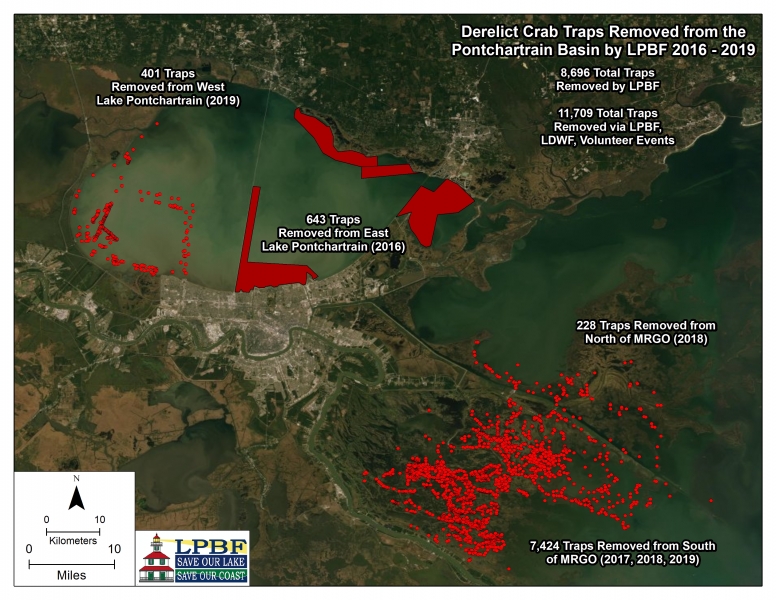
With funding from the NOAA Marine Debris Program, and through partnerships with the Virginia Institute of Marine Sciences (VIMS) and LDWF, LPBF plans to remove another 3,000 to 6,000 derelict crab traps from the Pontchartrain Basin in 2020 and 2021. This project will use traditional methods of removing visible traps and collecting high accuracy location, condition, and bycatch data using GPS. For the first time in LPBF’s derelict crab trap program, with technical guidance from VIMS, side-scan sonar methods will be used to remove derelict traps that do not have a visible line and float. VIMS will also use data collected by LPBF and LDWF (e.g., number of derelict gear, bycatch mortality, fishing effort) to assess the economic impacts of derelict traps to the Lake Pontchartrain Basin blue crab fishery.

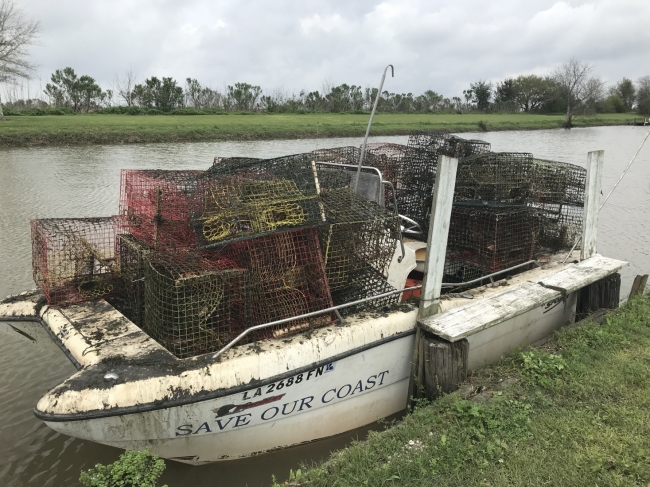
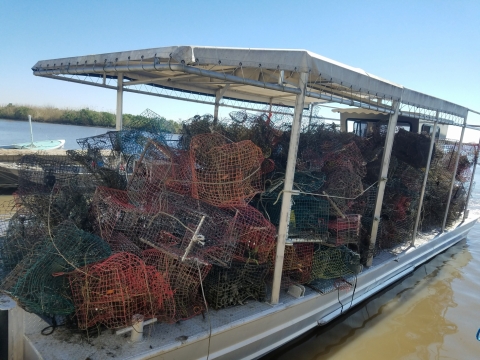
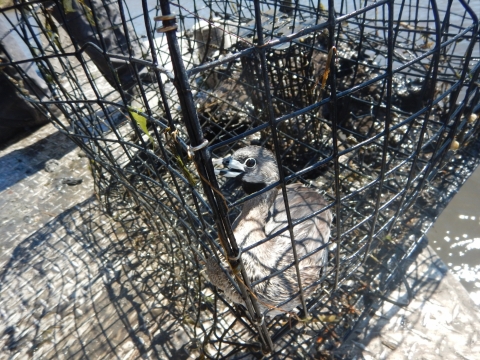
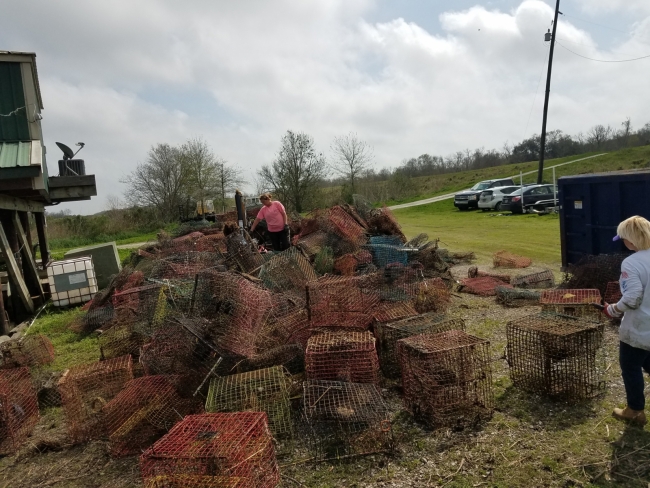
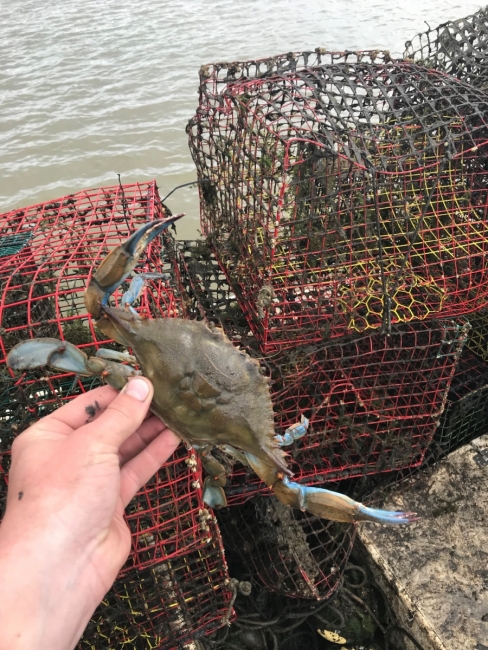
Is the LP crab industry required to use degradable throat like those used in the Alaskan fishery? The throats are made of untreated twine that deteriates rapidly so pot can nolonger hold crabs.